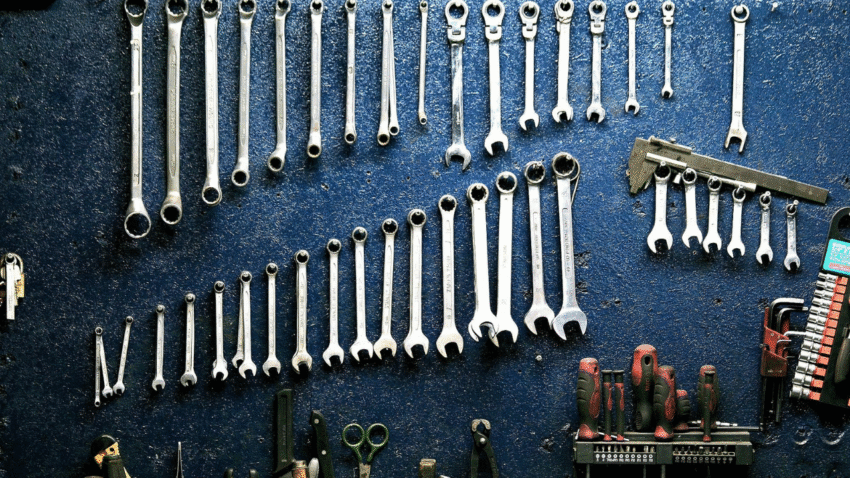Introduction
If your hobbies are competing with your car, storage bins, and seasonal decorations for space in the garage, it’s time to carve out an area just for you. A well-planned hobby space can give you a comfortable, organized environment to enjoy your passions—whether it’s woodworking, painting, crafting, or restoring vintage bikes. In this guide, you’ll learn how to create a dedicated hobby space in your garage that fits your needs, keeps tools and materials organized, and still leaves room for everything else.
Why a Dedicated Hobby Space Matters for Your Garage
Your garage is often one of the largest flexible spaces in your home, and transforming part of it into a hobby zone comes with big benefits:
- Keeps your projects organized and ready to work on without constant setup and teardown.
- Improves productivity by having all materials, tools, and storage in one place.
- Protects your hobby supplies from being damaged by clutter or misplaced.
- Creates a mental space where you can focus and enjoy your craft without distractions.
- Adds value to your home with a functional, versatile garage layout.
By clearly defining your hobby space, you can work more efficiently while keeping the rest of your garage safe and functional.
Step-by-Step Guide to Creating a Dedicated Hobby Space
1. Identify Your Hobby Needs
List the tools, materials, and workspace your hobby requires. For example:
- Woodworking: sturdy workbench, power tools, dust collection.
- Painting: easel, storage for paints, good lighting.
- Crafting: large table, drawers for supplies, cutting mats.
Knowing what you need helps you design a space that’s functional and efficient.
2. Choose the Right Location in the Garage
Pick a corner or wall where you can work comfortably without interfering with the garage door or main storage areas. For noisy hobbies, position your space away from shared walls with living areas to reduce noise.
3. Clear and Prep the Area
Remove any stored items and sweep or vacuum the floor. If needed, add insulation or wall panels to make the space more comfortable year-round. Consider adding a floor mat for standing comfort.
4. Plan Your Layout
Sketch your layout on paper or use online design tools. Arrange your work surface, storage, and seating in a way that maximizes space and workflow. Keep tools and materials you use most often within arm’s reach.
5. Install a Work Surface
Your work surface will depend on your hobby:
- Fixed Workbench: Best for woodworking or heavy-duty hobbies.
- Fold-Away Table: Great for small garages to save space when not in use.
- Standing Desk or Table: Ideal for art or craft projects.
Make sure your work surface is sturdy and at a comfortable height.
6. Add Storage Solutions
- Shelving Units: Store boxes of materials and rarely used items overhead.
- Pegboards: Hang frequently used tools or supplies for easy access.
- Drawers and Cabinets: Keep small parts and fragile items safe.
- Clear Bins with Labels: Quickly see contents and stay organized.
7. Improve Lighting
Good lighting is essential for detailed work. Combine bright overhead LED fixtures with task lighting, such as desk lamps or clamp lights, to eliminate shadows.
8. Organize Electrical Access
If your hobby uses power tools, lights, or chargers, make sure outlets are nearby. Use heavy-duty extension cords or install additional outlets if necessary. Keep cords managed with cable clips or ties to prevent tripping.
9. Personalize the Space
Add a chair, stool, or other comfort features. Hang inspiration boards, tool racks, or art related to your hobby. Personal touches make the space inviting and motivating.
10. Set Boundaries
If your garage is shared with cars or other storage, physically mark your hobby space with mats, dividers, or shelving. This prevents clutter from creeping into your workspace.
Common Mistakes to Avoid
- Not Planning for Growth
- Problem: Your hobby space becomes overcrowded as your tools and materials increase.
- Solution: Plan extra storage and surface area from the start.
- Poor Lighting Choices
- Problem: Dim light can cause eye strain and affect project quality.
- Solution: Invest in bright, adjustable lighting tailored to your work.
- Neglecting Safety Measures
- Problem: Tools and materials left unsecured can be dangerous.
- Solution: Store sharp tools safely and ensure your area has proper ventilation.
- Blocking Access to Other Garage Areas
- Problem: Your setup makes it hard to access cars, shelves, or the garage door.
- Solution: Keep pathways clear and plan around high-traffic areas.
- No Climate Considerations
- Problem: Extreme heat or cold makes the space uncomfortable.
- Solution: Add insulation, fans, or heaters to maintain comfort.
Extra Garage Tips & Hacks
- Rolling Storage Carts: Easily move supplies around your hobby space or out of the way when needed.
- Overhead Storage Racks: Keep rarely used materials off the floor and out of your workspace.
- Magnetic Strips or Boards: Hold metal tools or accessories without taking up counter space.
- Related Tip: Read our guide on how to set up a wall-mounted tool organizer for more efficient storage.
Conclusion
Learning how to create a dedicated hobby space in your garage can transform both your hobby and your home. By identifying your needs, planning your layout, and organizing effectively, you can build a functional, personalized space that inspires creativity and productivity.
Bookmark this guide to keep your garage functional, organized, and ready for your next project.
